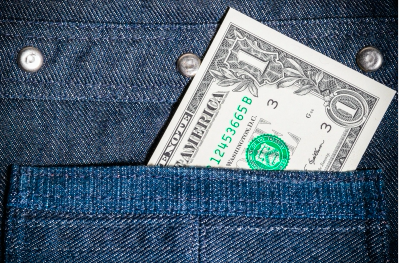
According to Don Blanton (insurance industry spokesman and software creator who developed The Private Reserve Strategy™), there are three ways to make major, capital purchases like automobiles:
1) Going in debt. You may not have a choice. Millions of Americans don’t, and that is what keeps the wheels of the banking industry turning. Debtors aren’t earning any interest, so they are forced to pay interest.
2) Save up for it. Saving up for something in order to pay cash for it is an admirable discipline. Savers earn interest on their savings dollars and then pay for the purchase outright. Paying cash is better than borrowing money, but you still have to pay yourself back in some way or another. Then there’s the third way:
3) Collateralize. This method is used by individuals who could pay cash for the purchase, but they understand that second principle of compound interest: it works best if left alone to grow. These are the ones who earn compound interest on their savings and they collateralize their major purchases. This is the method most conducive to creating wealth. Collateralization simply means to pledge a portion of one’s money as security for an amortizing loan against one’s cash purchases. That way, your money is still earning interest while you are paying interest.
An amortized loan, sometimes called an installment loan, is where monthly payments are applied first toward reducing the interest balance, and any remaining amount is applied toward the principal balance. As the loan is paid off, a progressively larger portion of the payments goes toward principal and a progressively smaller portion goes toward interest.
The Zero Line
To analyze this type of financial thinking, imagine a line going across the page we will call the zero line. It represents the financial position of someone who has nothing and owes nothing.
Going into debt– When someone has no money but still must make a purchase, they are forced to borrow against their future income. That forces them to go below zero to a certain point. Draw a straight line downward from the zero line to the debt amount. Now draw stair steps leading back to the zero line to represents the payments made by the debtor to get back to zero when the loan is paid off. If you are like most people in this category, now the process begins again. It’s easy to get trapped in this endless cycle.
Saving up for it- Then there are those who save up for the item and pay cash. This method postpones gratification by essentially making “savings payments” above the zero line until they have accumulated enough to buy it with the cash. Draw stair steps representing those “savings payments” up from the zero line. Then the day comes to make the purchase. Now draw a straight line back to the zero line. That represents draining the tank to buy the item. The saver doesn’t like being that close to the zero line, so they begin saving again until the next needed item must be purchased, and they drain the tank and the process starts again.
Collateralization- Those who create wealth have been saving just like the savers. But when it comes time to make a purchase, they borrow against their capital and pay off the lender while they continue to compound interest on their money. They made the same purchases as the other two, and they paid off their loans, just like the debtor and the saver, but the wealth creator earned the benefits of compound interest along the way. Draw a line continuing to climb, year by year, far above the zero line.
The Problem with Debt
Blanton describes debt as the act of borrowing money to buy things that you can’t pay for in full with your monthly cash flow. A debtor is someone who has the intention to repay but does not have the ability to pay in full at the time of the purchase.
The problem with debt is you have a future obligation against your earnings that you may or may not be able to fulfill. You not only lost the money you spent, but you had to pay interest to get it. When you go into debt, you essentially lose control of your cash flow.
You have no control over the money you are spending to repay the debt. Repayment is forced upon you by terms of the agreement. Debt is not an efficient purchasing strategy.
The Problem with Paying Cash
Paying cash means you have to drain your savings – money that was earning, or had the potential to earn, compound interest. Depleting the savings means that you had to reset the compounding.
The way compounding works puts me in mind of the old steam engine trains. They left the station slowly, chuffing great puffs of smoke and steam. They picked up speed slowly, but once they got moving, they moved faster and faster, using less energy to do it.
When you reset compounding, you lose that initial momentum you worked so hard to build up. Think of the zero line again. For cash payers to truly get back to where they were before they drained the savings tank, they have to put back not only the amount they borrowed, but the interest they would have earned as well.
Another factor is taxes. In most accounts, any money earned is taxed either while it is in the account or upon withdrawal. Remember, compound interest works best over time and when it is not interrupted. Paying cash is not bad, but it’s not the most efficient purchasing strategy.
The Future Effect of Paying Cash
Any time you drain the savings tank to pay for a substantial purchase with cash, you are resetting the compounding process. Paying cash keeps us from paying interest, true. But we still lose the interest we could be earning.
Look at the long-term view. Say you have $50,000 in an account earning 5% compound interest. If you leave it alone, you will have $216,097 in 30 years. But let’s say you had a major purchase you needed to make, so you drained the tank of the entire amount, but you put the money back within four years.
The compounding momentum that you lost was costly indeed. The restored $50,000 account will only grow to $177,784 in the next 26 years. Big difference!
Why Not Be Your Own Bank?
One concept that successful wealth builders employ is to, in a sense, serve as their own lending institution. Wait a minute! Wouldn’t that “rob the bank,” so to speak?
How would the banks make a profit if we were to stop paying interest to the bank and pay it to ourselves instead?
That’s just the point! This is a unique way to solve your need for capital while you are saving for your future.
Here’s how it works…
Imagine a large piggy bank that represents an account with money in it. Call it “My Bank.” Let’s assume you want to make a major capital purchase, such as buying a car. Rather than draining your bank to do it, you secure a loan from a financial institution against the money you have in your bank
The lending institution gives you a check for the amount you want to borrow and you make your purchase. You now have an amortizing loan with the lending institution and they have a collateral position against your private bank. You will pay the institution declining interest while your private bank is earning compound interest
You are leveraging the difference between amortized payments and compounding interest only if the interest rate is higher.
The most important thing is that you have liquidity, use, and control of your cash and the compounding isn’t interrupted.
To illustrate the difference between amortizing and compounding, let’s say you have a $30,000 car loan on which you are paying 5% interest over a five-year period. Your monthly payments are $566. At the end of the five years, you would have paid $3,968 in interest.
If you had $30,000 in an account earning 5% compound interest for those five years, you would have earned $8,501, while you were paying $3,968 in interest through the amortized car loan. However, you would have to use your future cash flow to pay down the car loan and that means you would lose the opportunity cost on those payments in the future.
What about mortgages? If you were to buy a house for $300,000 and pay cash, the cost over 30 years would be $1,340,323 in lost interest, assuming a 5% interest rate. If you finance $300,000 at the same 5% rate, the cost is going to be the same. The principle is the same even if the amounts you are dealing with are higher.
Giving up your cash and the access to it is not the best alternative if you are able to leverage your own assets, earning compound interest while paying off an amortized loan.
If you’re interested in learning more or have any questions, get in touch with me. You can call me at 1-352-561-4571 or click the yellow button to the right that says, “schedule free strategy session.”
Image courtesy of moggara12 at FreeDigitalPhotos.net


